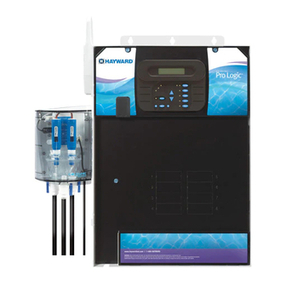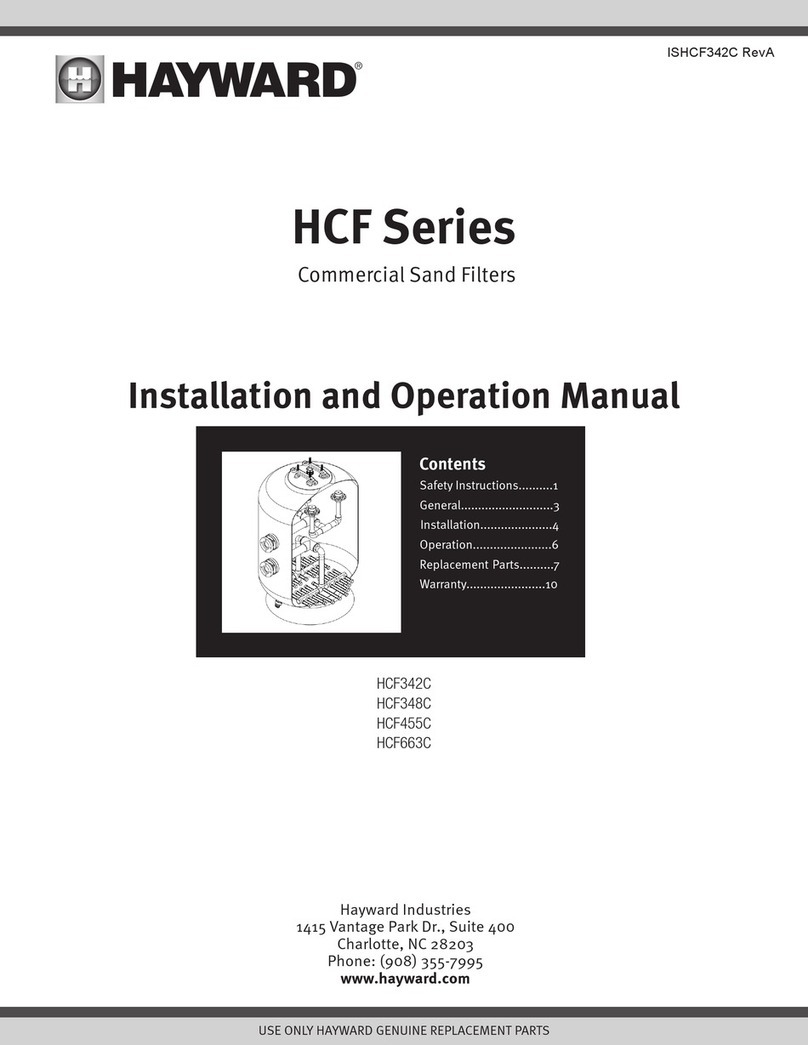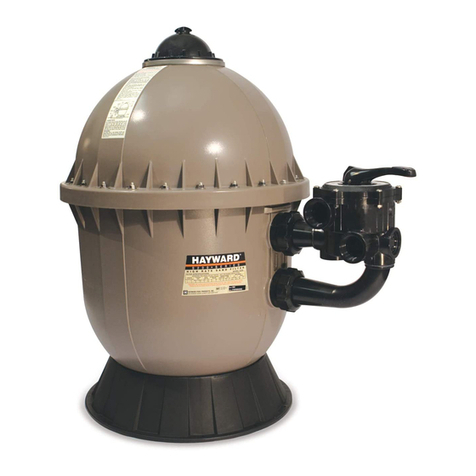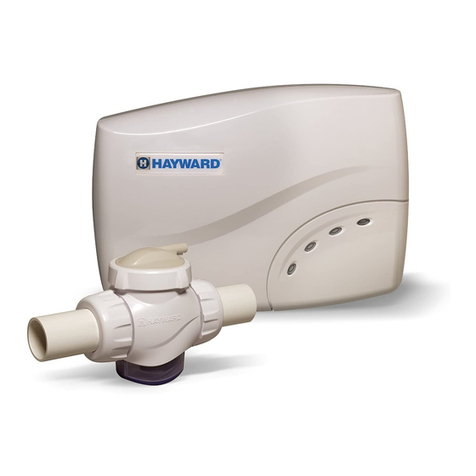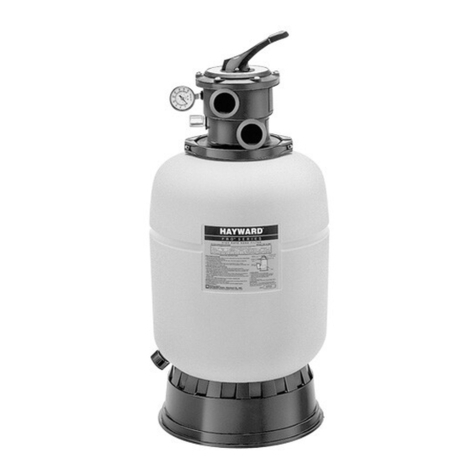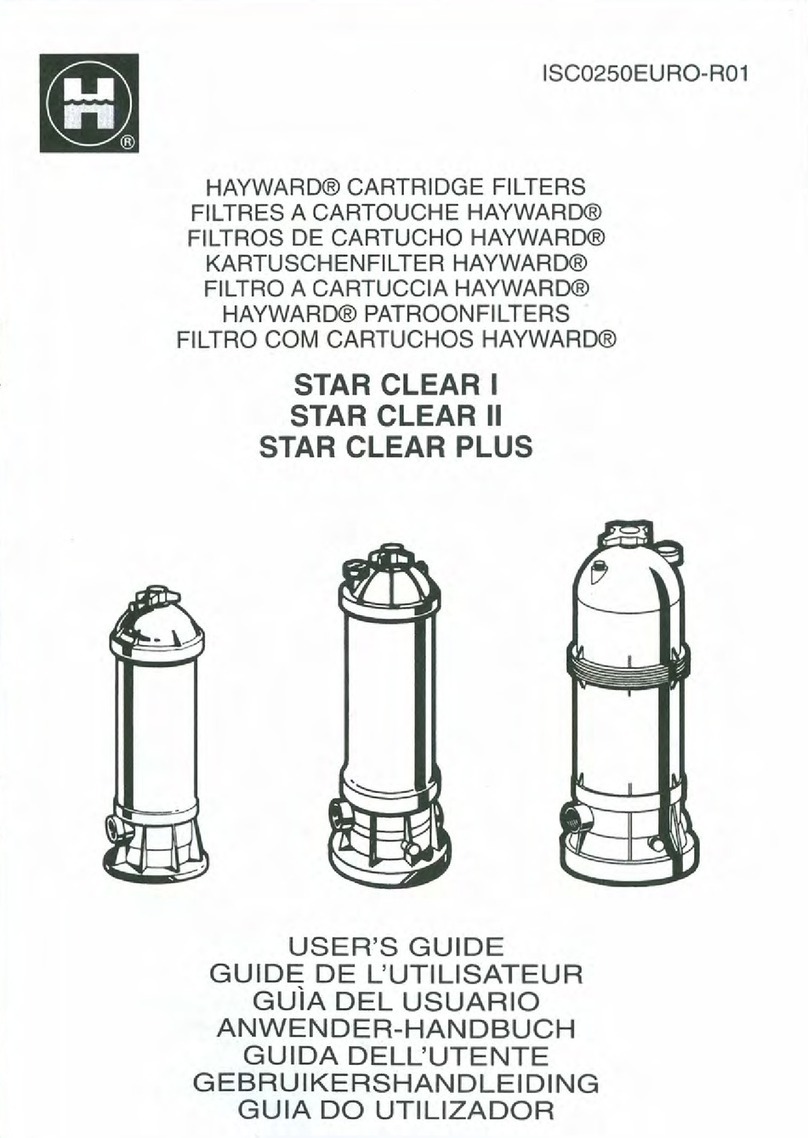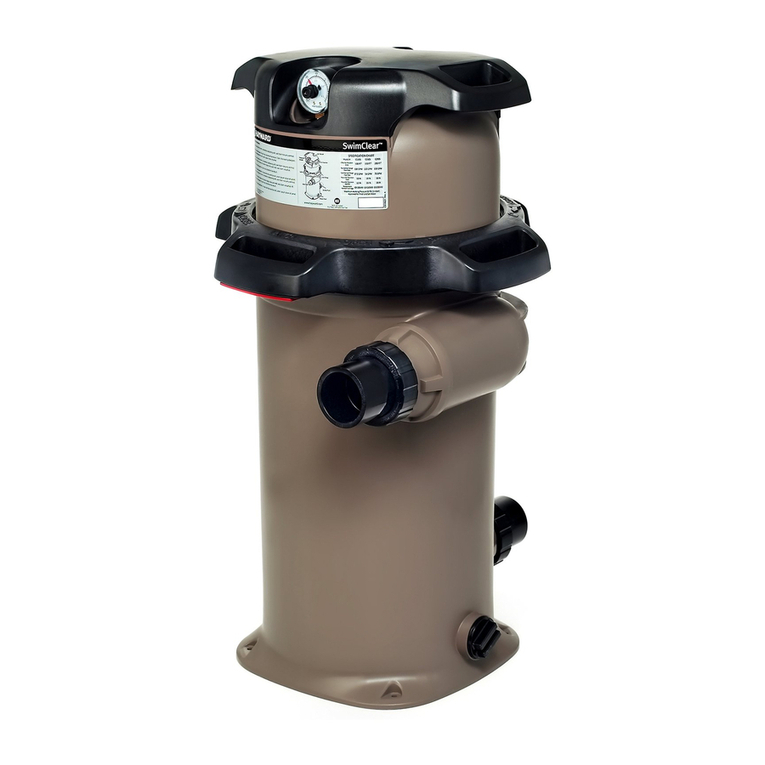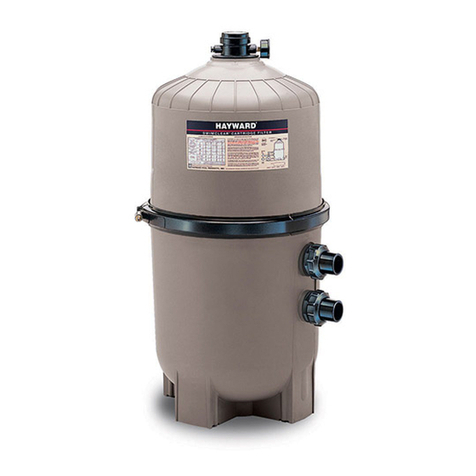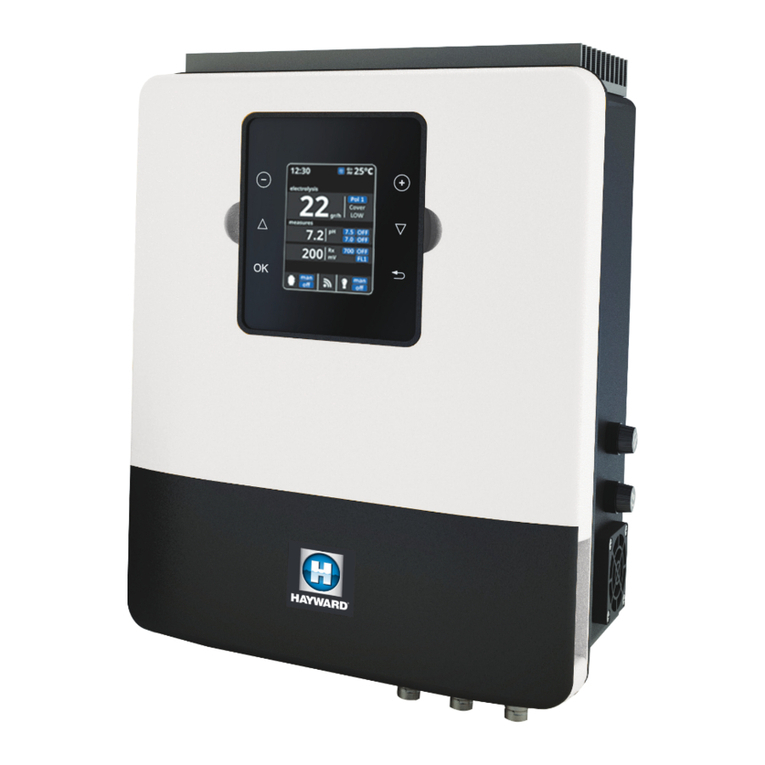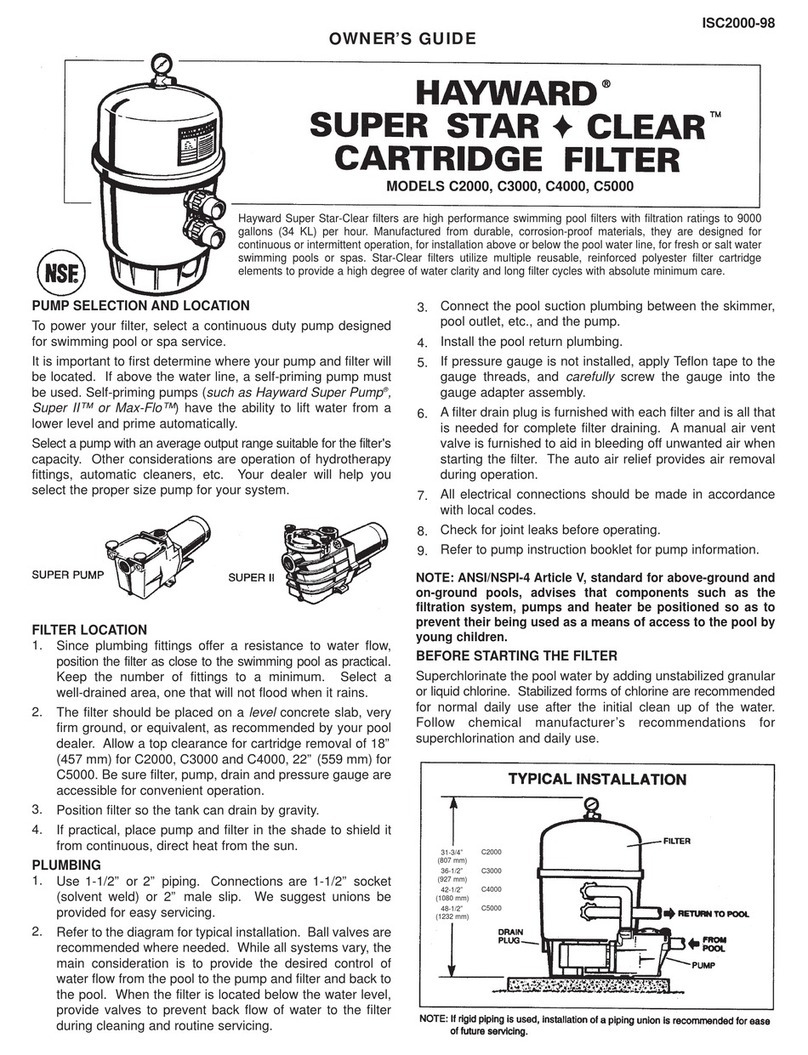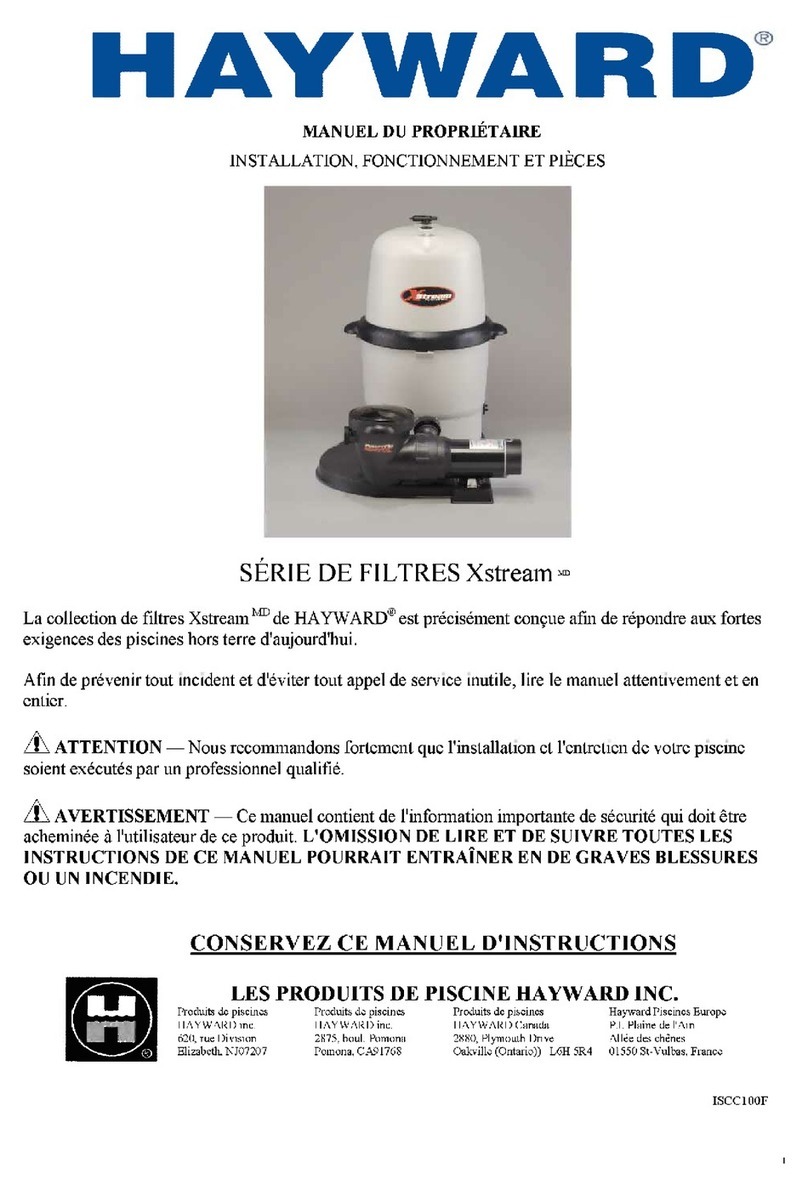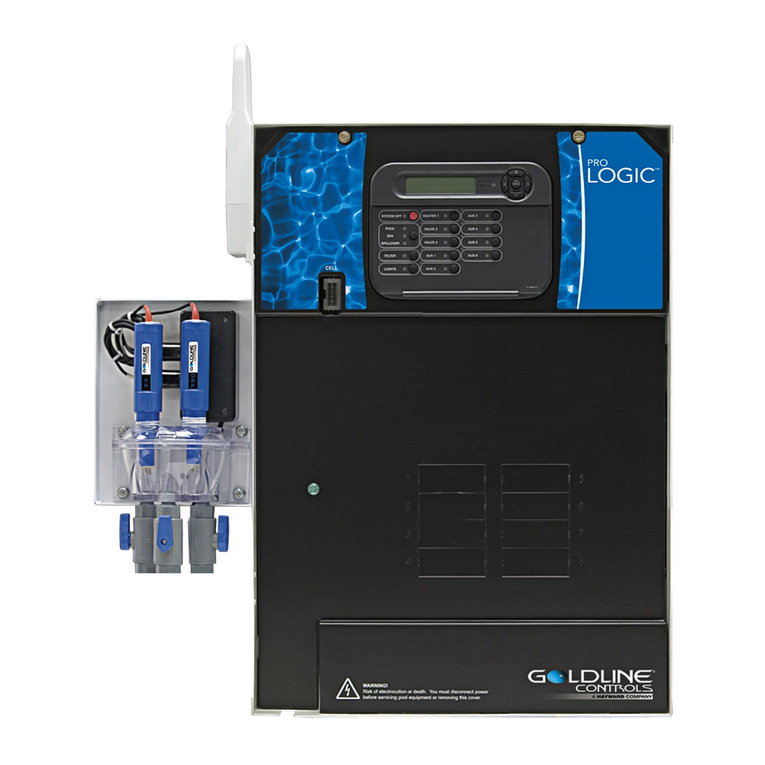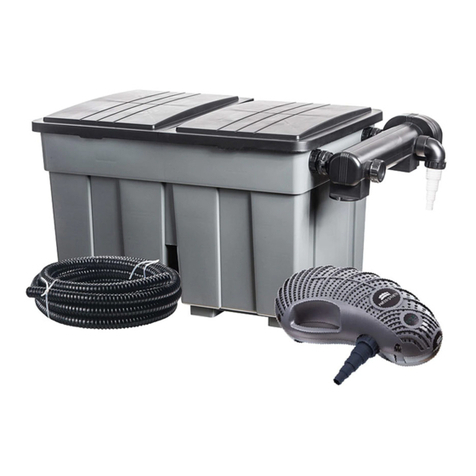If you own a GM152 Series filter, fill the tank 1/2 way with
water to provide a cushioning effect when the filter sand is
poured in. Note: Check to confirm all laterals are in the
down position before loading with sand. (See Figure A
on Page 2).
Loading Sand Media. Sand Media (.45mm-.55mm) is
loaded through the top opening of the filter. Sand surface
should be leveled and the distance from the surface of the
sand top of the tank should be at least 12 inches. Use no
more than the recommended amount of sand.
Center the standpipe in the opening and remove the
protective cap. Place stainless steel flange clamp around
neck of tank. Check to be sure that O-ring is in place on
valve flange as shown.
Screw straight adapter, using Teflon pipe sealant or
Permatex No. 2, securely into pump discharge. (Do not
overtighten).
Screw elbow or straight adapter, using Teflon pipe sealant
tape or Permatex No. 2, securely into opening in control
valve marked PUMP. (Do not overtighten). For those with
elbow adapter, elbow should point toward pump at
approximately 45˚ angle.
NOTE: To prevent breakage and damage to pump and control
valve, use only pipe sealants specifically formulated for
plastics. Do not overtighten fittings or adapters.
Insert the valve into the tank neck taking care that
standpipe slips into hole in bottom of valve. Snap flange
clamp around valve flange and tank neck. Do not tighten.
Slip hose clamps on ends of plastic hose. Rotate valve so
that elbow or straight adapter and pump adapter are
aligned and connect the two by pushing the ends of the
plastic hose over the adapters and tightening the hose
clamps.
Tap all around stainless steel valve flange clamp and
tighten with screwdriver. Carefully screw pressure gauge
with pipe tape, into 1/4” tapped hole in the valve body, or
the tank body if using GM400 valve.
Make connections from valve opening marked RETURN to
the pool inlet. Connect skimmer and/or main drain to
suction side of pump.
Make electrical connections to pump per pump instructions.
To prevent water leakage, be sure winter drain cap is
securely in place and all pipe connections are tight.
INITIAL START-UP OF FILTER
Be sure correct amount of filter sand media is in tank and
that all connections have been made and are secure.
Depress valve handle and rotate to BACKWASH position.
Prime and start pump according to pump instructions (be
sure all suction and return lines are open), allowing the
filter tank to fill with water. CAUTION: All suction and
discharge valves must be open when starting the
pump. Failure to do so could cause severe personal
injury and/or property damage. Once water flow is
steady out the waste line, run the pump for at least
1 minute. The initial backwashing of the filter is
recommended to remove any impurities or fine sand parti-
cles in the sand media.
(This step only for those with 6-position valve). Turn
pump off and set valve to RINSE position. Start pump
and operate until water in sight glass is clear—about
1/2 to 1 minute.
Turn pump off, set valve to FILTER position and restart
pump. Your filter is now operating in the normal filter mode,
filtering particles from the pool water.
Adjust pool suction and return valves to achieve desired
flow. Check system and filter for water leaks and tighten
connections, bolts, nuts, as required.
Note the initial pressure gauge reading when the filter is
clean. (It will vary from pool to pool depending upon the
pump and general piping system).As the filter removes dirt
and impurities from the pool water, the accumulation in the
filter will cause the pressure to rise and flow to diminish.
When the pressure gauge reading is 8-10 PSI (0.55-0.69
BAR) higher than the initial “clean” pressure you noted, it
is time to backwash (clean) the filter (see BACKWASH
under Filter Control Valve Functions).
NOTE: During initial clean-up of the pool water it may be
necessary to backwash frequently due to the unusually
heavy initial dirt load in the water.
CAUTION: To prevent unnecessary strain on piping
system and valving, always shut off pump before
switching filter control valve positions.
To prevent damage to the pump and filter and for proper
operation of the system, clean pump strainer and skimmer
baskets regularly.
FILTER CONTROL VALVE FUNCTIONS
FILTER—Set valve to FILTER for normal filtering. Also use for
regular vacuuming.
BACKWASH—For cleaning filter. When filter pressure gauge
rises 8-10 PSI (0.55-0.69 BAR) above start-up (clean
pressure):
Stop the pump, set valve to BACKWASH. Start pump and
backwash approximately 2 minutes or less, depending on dirt
accumulation, until water in sight glass is clear. Proceed to
RINSE.
RINSE—After backwashing, with pump off, set valve to RINSE.
Start pump and operate for about 1/2 to 1 minute. This ensures
that all dirty water from backwashing is rinsed out of the filter to
waste, preventing possible return to the pool. Stop pump, set
valve to FILTER, and start pump for normal filtering. (Option
only available with 6-position valve).
WASTE—To bypass filter for draining or lowering water level
and for vacuuming heavy debris directly to waste.
RECIRCULATE—Water is recirculated through the pool
system, bypassing the filter.
CLOSED—Shuts off flow from pump to filter. (Option only
available with 6-position valve).
VACUUMING—Vacuuming can be performed directly into the
filter. When vacuuming heavy debris loads, set valve to
WASTE position to bypass the filter and vacuum directly out to
waste.
DRAIN—To lower water level or drain pool by gravity (pump
must be OFF).
4.
4a.
5.
6.
7.
8.
9.
10.
11.
12.
13.
1.
2.
3.
3a. *NOTE: For new concrete or gunite pools, or where there is a large amount of
plaster dust or debris—start filter in FILTER position (not BACKWASH) to prevent
clogging of underdrain laterals.
4.
5.
6.


